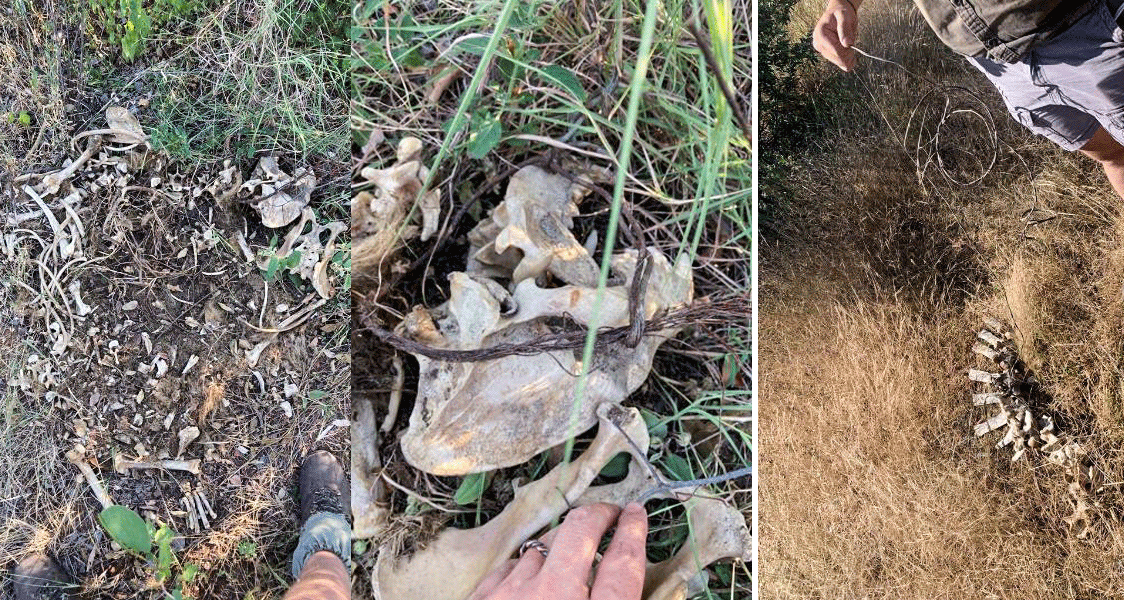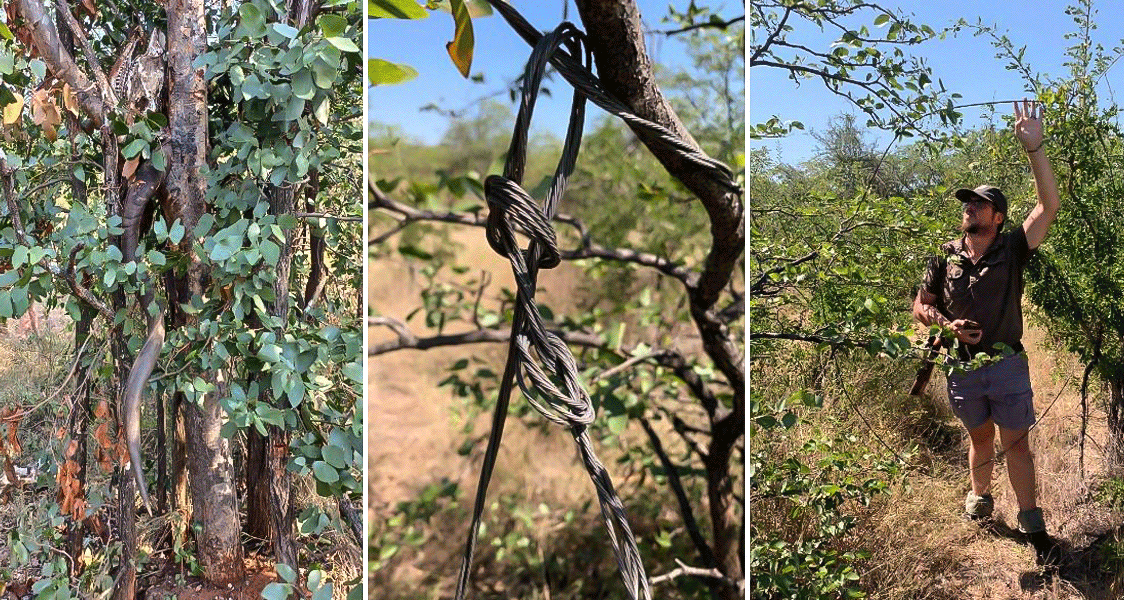Snare Busters - Snare Sweep Report

Eugene Troskie (Managing Director - PNHF NPC)
On Thursday, the 27th of April 2023, Snare Buster Project: Phalaborwa Natural Heritage Foundation (PNHF) directors and volunteers, together with SA Hunters and Game Conservation Association’s Mopani Branch members, conducted a snare sweep on the [redacted] Nature Reserve, north of Phalaborwa.
The operation was planned as a follow-up to check for snaring activity after a snared vulture was reported on the 18th of April 2023.


On Tuesday the 18th of April 2023, a snared vulture was reported to us (top left red skull icon).
While investigating the incident, we discovered and removed 84 snares. (Note: not all the snare locations were captured due to the team splitting up. The snare cluster in the right bottom corner was removed during a previous operation).

The white-backed vulture was caught in a thin cable snare set for predators coming in to scavenge on a young buffalo that was killed in a large cable snare. We found multiple sites where the poachers had caught herbivores in snares and butchered them for meat, but they use the heads, legs and intestines to bait predators to the site. These are most likely harvested for muthi purposes. We found at least one such predator snare broken off by an animal.
On the 18th of March, we found two buffalo, two wildebeest, one zebra, one waterbuck, one white-backed vulture and one spotted hyena dead in snares. The spotted hyena was an old carcass with a thick cable snare around its neck. It had broken the snare off at the original snaring site and died sometime later from complications.



On the 27th of April, we removed 120 snares from the same block, this brings the total to 204 snares removed between the 18th and the 27th of April.
The above map shows the locations of all snares removed during the two operations. The majority of the snares were large snares made of four cable strands woven together.
On the 27th, we found a large kudu bull killed in a snare. Its meat was harvested, and the head and legs were also used as bait for predators.


The snare sweep team was notified of a spotted hyena on [redacted], walking around with a snare around its neck, and an operation was planned. With the help of the reserve manager, we acquired bait to lure the animals. Dr [redacted] assisted in the darting procedure, and the animal was immobilised and the snare removed. The veterinarian noted that it was an old wound. The wound had already closed up over the snare, which leads us to believe that the freshly broken snare set for predators means that there is possibly another hyena with a snare on the reserve. It is advised that a call-up or baiting station be set up as soon as possible.


We recommend the blocks north and east of the one cleared has to be patrolled for signs of snaring.
These snares are originating from the [redacted] settlement west of the reserve. During the same period, cattle were killed on smallholdings south of the reserve using exactly the same snares.
It is a possibility that the cable is from old telephone lines, this needs to be investigated, and if it is the case, all remaining non-functioning telephone lines in the area need to be removed.





